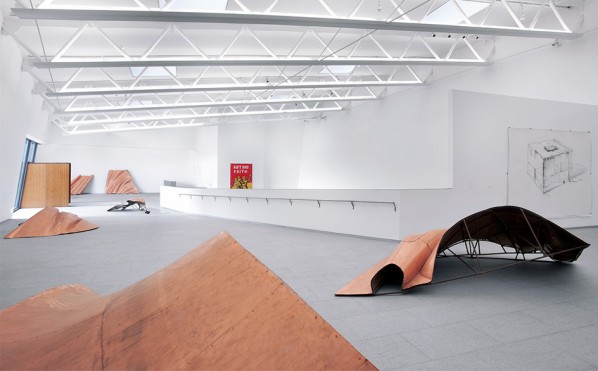
The Sifang Art Museum is situated in a kind of landscape-campus, together with other buildings like a hotel, a congress center and a number of villas. In a certain way the garden could be considered a contemporary re-iteration of the central role gardens played in Chinese culture. The imperial ones were built for pleasure and to impress, and the more intimate gardens created by scholars, poets, former government officials, soldiers and merchants, were made for reflection and escape from the outside world. A blend of nature and artifice, those latter gardens fully manifested the beauty of nature in a limited space, yet they were also meant as an improvement on nature. Like the classic Chinese garden blending man-made structures with natural elements, the Sifang Art Museum is an architectural folly in dialogue with the landscaped greenery around it. It is meant to be an artistic haven to draw people away from the maddening crowds in the city of Nanjing, and to provide a place where they can seek knowledge, reflection and the evocation of a spiritual atmosphere. But if we don’t forget tradition, the garden was also the place for romance and leisure, a sheltered realm, sequestered from the ‘corrupt’ and ‘dangerous’ world outside, and the environment of the Sifang Art Museum seems to evoke this quality.
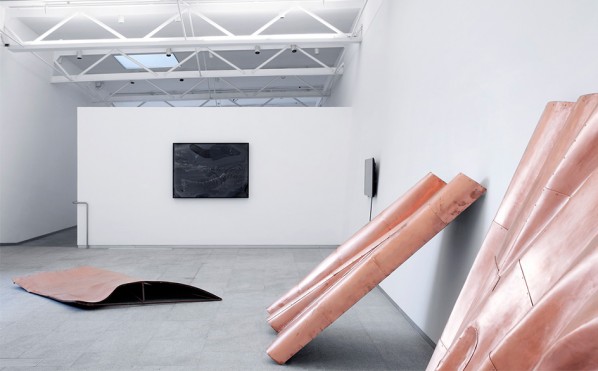
As exhibition The Garden of Diversion embraces that history, but connects it to a contemporary context outside the idyllic or the utopian. The art exhibited or installed within this architecture-as-a-gesture and the surrounding garden, will conjure up a ‘critical utopia’ versus what writer Hu Fang called a 'mythology of materialism', in his wonderful book Garden of Mirrored Flowers. This ‘mythology of materialism,’ which in China today fuels the exacerbated consumerism we see in the big cities, has, describes Hu Fang, “adequately concealed the truth about our lack of mythology of origins and the atrophy of our collective consciousness.” Moreover even when the garden with the museum, the hotel, congress-center and different villa’s may be a result of humanity’s attempt to carve out an ideal place in nature, today the possibility of sustaining a harmonious life in nature seems ever more remote.
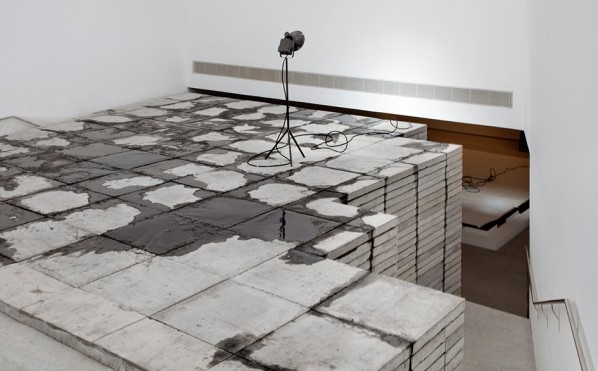
The opening exhibition of the Sifang Art Museum is conceived as a dialogue with He Shan, the protagonist of Hu Fang’s novel. He Shan is an architect who gradually found the complex maze of life in today’s society of the spectacle revealing itself to him as he constructed a theme park called “Garden of Mirrored Flowers.” Beginning as a pictorial journey through myriad advertisements and the way they allow for many different entries into reality, Hu Fang depicts parallels between the park’s actual creation, and how it has been imagined by He Shan, or how it has evolved out of history’s examples. Culminating with the park’s opening ceremony, Fang suggests a space where history and its commemorations seem to have been completely consumed and absorbed by contemporary social movements.
The artworks assembled for the first exhibition-project of the Sifang Art Museum share a consciousness that their spatial and social relationships aren’t necessarily bound up in the self-contained art object, but that their gestures are integrated within larger spaces or social realms. Re-considering the utopian tradition of philosophical gardens in China, the exhibition connects a variety of subject mater. The museum with its oblique walls and unexpected vistas, and the installed artworks, both in content and in their formal structure, challenge a conception of space in visualand social terms. Emphasising what must be experienced rather than merely seen, and actively engaging each visitor, they suggest an alteration of temporal and spatial conditions of the exhibition rooms and the outside gardens. Each of these works use the strategies, actions or materials to radically alter reality and transform the environment, offering deviations, detours, distraction, amusement and disturbances. The Garden of Diversion, in sometimes-perverse ways, connects the utopian with what we would consider the “real world”, though we never really seem to grasp what that might be. The Garden of Diversion fully embraces our apparent living in multiple realities, in which the meaning of history, its memory and monuments, or the place of the body, hedonism and sexuality, gets blurred.
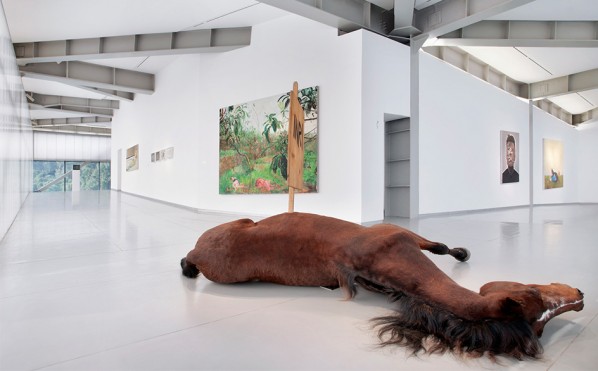
The exhibition will include works made especially for the occasion by acclaimed Chinese and international artists such as He An, Gabriel Lester and MadeIn Company/ Xu Zhen, and emerging Nanjing-based artist Li Jingxiong. Next to these site-specific works, the exhibition features works by important international artists like Olafur Eliasson, Liang Wei, Yutaka Sone and Danh Vo, and significant works by a.o. Duang Jianyu, Marlene Dumas, Kan Xuan, Anselm Kiefer, Mao Yan, Zhang Peili, Lucy Raven, Sun Xun, Luc Tuymans, Yang Fudong, Zhang Enli, and Zhou Chunya.
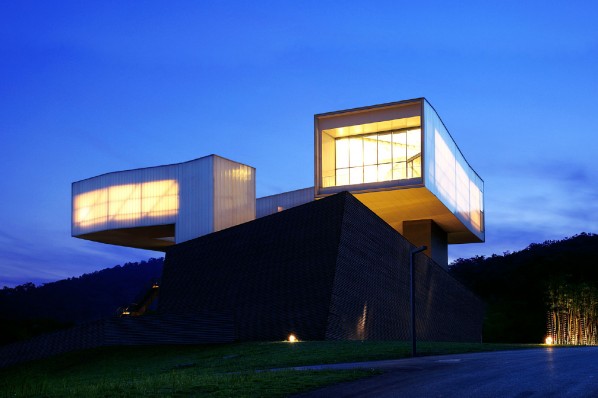
About the Curator
Art historian Philippe Pirotte (Antwerp, Belgium 1972) is currently Adjunct Senior Curator at the University of California, Berkeley Art Museum and Pacific Film Archive (USA), senior Advisor at the Rijksakademie for Visual Arts, Amsterdam (NL), and strategic director of the Sifang Art Museum in Nanjing, China.
Most recently he curated Estranged Paradise, the first midcareer survey exhibition of acclaimed Chinese film-artist Yang Fudong at the Kunsthalle Zürich, which is now on view at the UC Berkeley Art Museum and Pacific Film Archive.Previously he was founding and artistic director (1999-2004) of the contemporary art centre objectif_exhibitions in Antwerp, Belgium. From 2005 till 2011 he headed the renowned Kunsthalle Bern in Switzerland (2005-2011).
About the exhibition
Duration: November 02, 2013 - March 02, 2014
Venue: The Sifang Art Museum
Address: No.9 Zhenqi Road Pukou District Nanjing Jiangsu P.R.China
Courtesy of the Sifang Art Museum.




























